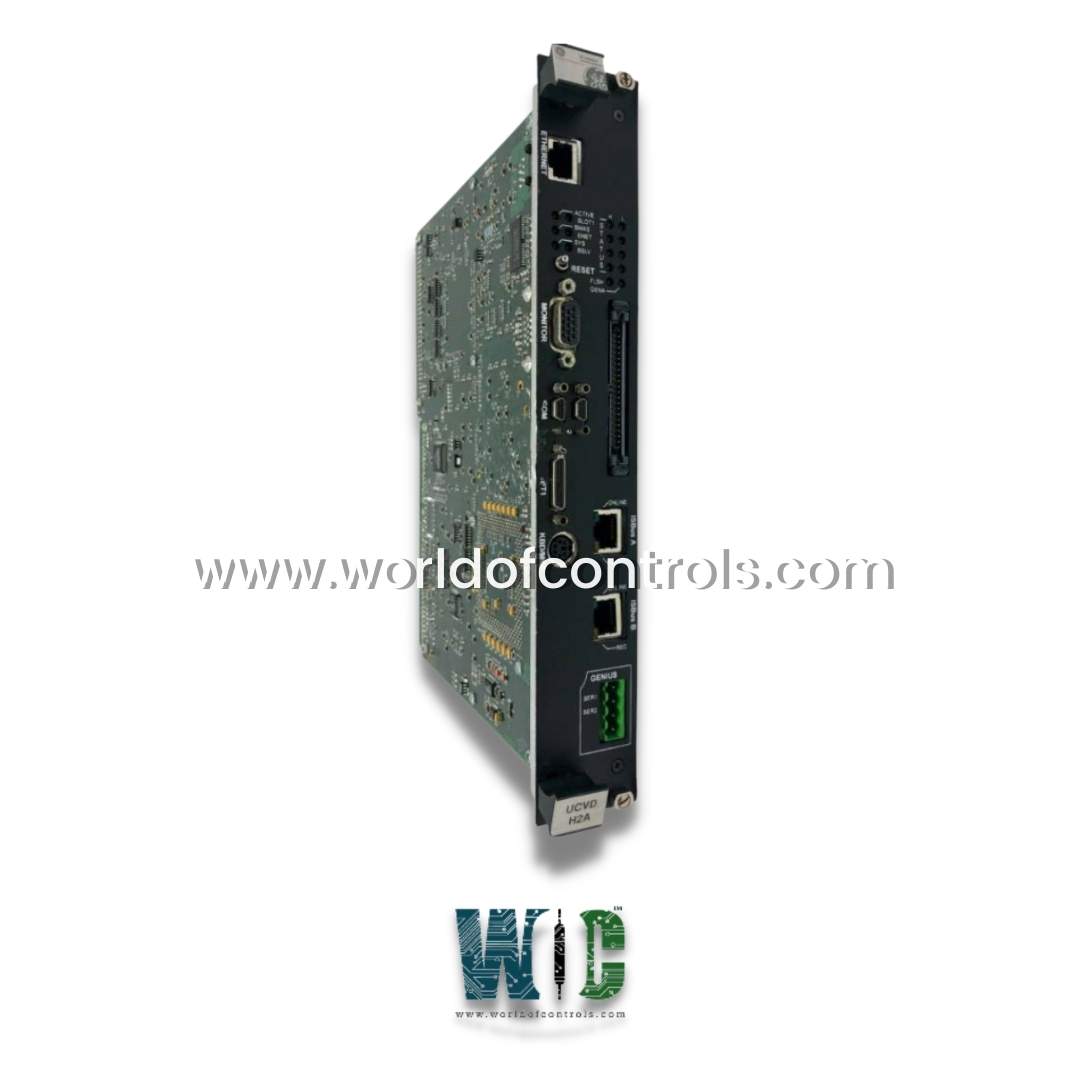SPECIFICATIONS
Part No.: IS215UCVDH2AK
Manufacturer: General Electric
Country of Manufacture: United States of America (USA)
MPU pulse rate range 2 Hz to 20 kHz
MPU pulse rate accuracy 0.05% of reading
MPU input circuit sensitivity 27 mV pk (detects 2 rpm speed)
Flame detectors: 8 per VTUR
Temperature rating: 0 to 60 oC
Product Type: double-slot board
Availability: In Stock
Series: Mark VI
Functional Description
IS215UCVDH2AK is a double-slot board developed by GE. It is a part of Mark VI control system. IT is equipped with a potent 300 MHz AMD K6 processor, renowned for its reliability and computational efficiency. To support seamless operation and data processing, it is equipped with 8 MB of flash memory and 16 MB of dynamic random-access memory (DRAM). This configuration ensures swift execution of tasks and facilitates rapid access to critical data and applications.
Features
- Connectivity: Features a single 10BaseT Ethernet port, utilizing an RJ-45 connector for connectivity to the UDH. This Ethernet port serves as the primary interface for communication between the UCVD and other components within the system, facilitating data exchange, control commands, and visualization updates.
- Control: Leveraging its processing power and connectivity capabilities, the UCVD plays a central role in controlling various aspects of the system's operation. It executes control algorithms, monitors system parameters, and coordinates the execution of commands to ensure optimal performance and functionality.
- Visualization: As part of its role in visualization, the UCVD processes and displays crucial system information in a user-friendly interface. Through intuitive visualization displays, operators can monitor real-time data, analyze trends, and make informed decisions to optimize system operation and performance.
- Data Exchange: The Ethernet connectivity enables seamless data exchange between the control system and external devices or networks. It facilitates the transfer of operational data, diagnostic information, and control commands, ensuring effective communication and interoperability within the broader system architecture.
- Remote Access: Ethernet connectivity also enables remote access to the system, allowing authorized users to monitor and control system operations from remote locations. This capability enhances operational flexibility, enabling remote troubleshooting, maintenance, and management of the system, thereby minimizing downtime and optimizing productivity.
LED Indicators
- ACTIVE: The ACTIVE LED indicates that the processor is currently active and operational. Serves as a visual confirmation that the device is powered on and functioning as intended, providing reassurance to users about the system's readiness.
- SLOT 1: The SLOT 1 illuminates when the controller is configured as the slot 1 controller within the VME (Versa Module Eurocard) rack. This LED helps users identify the specific slot configuration of the controller within the rack, facilitating efficient troubleshooting and maintenance tasks.
- BMAS: When the BMAS LED is lit, it signifies that VME master access is currently occurring. This LED provides real-time feedback about data access activities within the VME bus, enabling users to monitor system communication and data exchange processes.
- ENET: The ENET indicates Ethernet activity, illuminating when data communication is taking place over the Ethernet interface. Users can rely on this LED to monitor network connectivity and data transmission, ensuring seamless communication between the device and other networked components.
- BSLV: Similar to BMAS, the BSLV lights up to indicate VME slave access, signaling ongoing data access activities involving VME slave devices. This LED complements the BMAS indicator, providing comprehensive visibility into both master and slave data access within the VME bus.
- STATUS: The STATUS LED features a rotating pattern when the device is operating normally and in an OK status. In the event of a fault or error condition, the STATUS LED flashes an error code, alerting users to the presence of an issue that requires attention or troubleshooting.
- FLSH: When data is being written to the flash memory of the device, FLSH illuminates. This LED serves as a visual cue indicating ongoing write operations to the flash memory, ensuring users are aware of data storage activities within the device.
- GENX: The GENX LED indicates the activation of Genius I/O, lighting up when Genius I/O functionality is active. Users can rely on this LED to confirm the operational status of Genius I/O, a feature that enhances the device's input/output capabilities for enhanced functionality and control.
The WOC team is always available to help you with your Mark VI requirements. For more information, please contact WOC.
Frequently Asked Questions
What is IS215UCVDH2AK?
It is a double-slot board developed by GE under the Mark VI series.
What does it mean when the ACTIVE LED is illuminated?
It indicates that the processor is currently active and operational. It confirms that the device is powered on and functioning correctly.
How can I determine the slot configuration of the controller within the VME rack?
SLOT 1 illuminates when the controller is configured as the slot 1 controller in the VME rack, providing clear visual identification of the controller's slot configuration.
What does the BMAS LED signify?
BMAS indicates ongoing VME master access, offering real-time feedback about data access activities within the VME bus.
